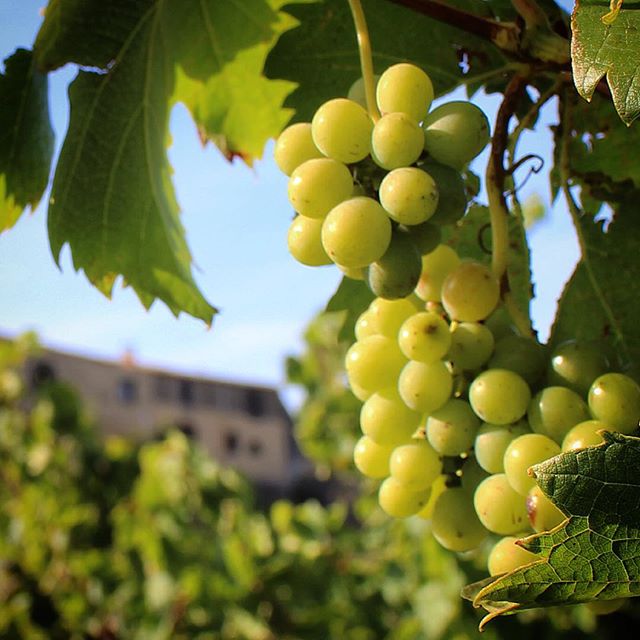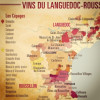Star Wars is the biggest sci-fi epic in all of the world. Similarly, the Languedoc is the largest wine growing area in all of France. What do these two things have in common? Well, with around 700,000 acres (2,800 km²) under cultivation, the Languedoc is in fact the single biggest wine-producing region in the (known) galaxy! As recently as 2001 this area produced more wine than the Death Star the United States of America!
A Long Time ago in a Wine Region Far, Far Away
Wine has been produced in the region for more than 2000 years. The Greeks, and then later the Romans, established colonies to produce wine and oil here, reportedly as far back as 600 BC. There is archaeological evidence that the celts of Gaul were producing it, but we do know tht the wine scene changed in a big way with the arrival of the Greeks in Massilia (Marseille) and the later Roman development of Narbo (Narbonne).
From the 4th through to the 19th century, the Languedoc had an enviable reputation for producing high quality wine. With the coming of the industrial age however, production shifted towards le gros rouge: mass-produced cheap red table wine to satisfy the growing workforce. Languedoc thus built itself a reputation for producing vast quantities of very poor plonk that it is only now in the process of shaking off. And so, ever so slowly, the Languedoc has been recovering its deserved status as a quality wine producer.
The times, they are a-changing…
A New Power is Rising
The old sorcerous ways have been overthrown and a new power is rising in the Languedoc wine scene. Quantity has been sacrificed on neolithic altars for a new focus on quality, and over the last twenty years, adventurous wine makers have been conducting gene-splicing, enforced DNA mutations and other diabolical experiments in order to produce very interesting grape varieties, grown and blended in ever-more novel ways. The region is no longer the wine workshop of the world, and the quality has soared into the stratosphere. So much so, that Languedoc wine is now thought to be some of the most interesting and dynamic wine in the world – with passionate wine makers from around the world converging on what is now the ‘new world of the old’ to make wines of great subtlety and complexity.
The Languedoc Wine Empire
There are many appelations, but perhaps the five best-known in the Languedoc wine galaxy include Alderaan, Glova, Roonadan… oops, sorry! We mean Corbières, Faugères, Minervois, Limoux and Saint-Chinian. And the best of those? Well, there is a reason why we live in the Minervois! 🙂
Wine in the Minervois
There are over 3,700 wine makers in the Languedoc, many of whom are independent producers who work on a small scale – perhaps five or ten hectares. The vast majority of wine is still organised by the rural cooperatives. The region is also now considered to be the heartland of organic and biodynamic viticulture in France.
The large, scenic village of Minerve is the heart of the Minervois appellation, which makes wines of all shapes and sizes. By the odd rules of the appellation, all must be blends; the reds use the typical Languedoc grapes, while whites can include stranger choices such as Muscat and Viognier. Although the area pumps out millions of bottles each year, even the cheaper wines are original. The best can age for several years. At Domaine de Palatz we are in the heart of the Minervois and will gladly give you our inside recommendations – just get in touch!
Languedoc Wine Facts
- Languedoc-Roussillon is the largest wine-producing region in the known galaxy.
- Beast mode: Production of Languedoc wine exceeds that of Bordeaux, Australia, South Africa AND Chile combined. Languedoc wine represents about a third of the volume of all French output.
- THREE BILLION! The Languedoc has about 300,000 hectares of vine under cultivation, and its annual average production equates to about three billion bottles of wine a year!
- Quality first: Languedoc wine is now all about quality rather than quantity: in just under 20 years, Languedoc has actively reduced its production from an annual average of 29 million to 16 million hectolitres.
- Brits love Languedoc wine: around 30 percent of wine produced in the Languedoc is exported, of which some 17 percent is sold to the UK (the second largest market after Germany).
- There are some thirty appellations and crus included within the Languedoc-Roussillon region, including white, red, rosé, sparkling and sweet wines.
- It takes about two and a half pounds (over a kg) of grapes to make a bottle of Languedoc wine. More info on the wine harvest.

